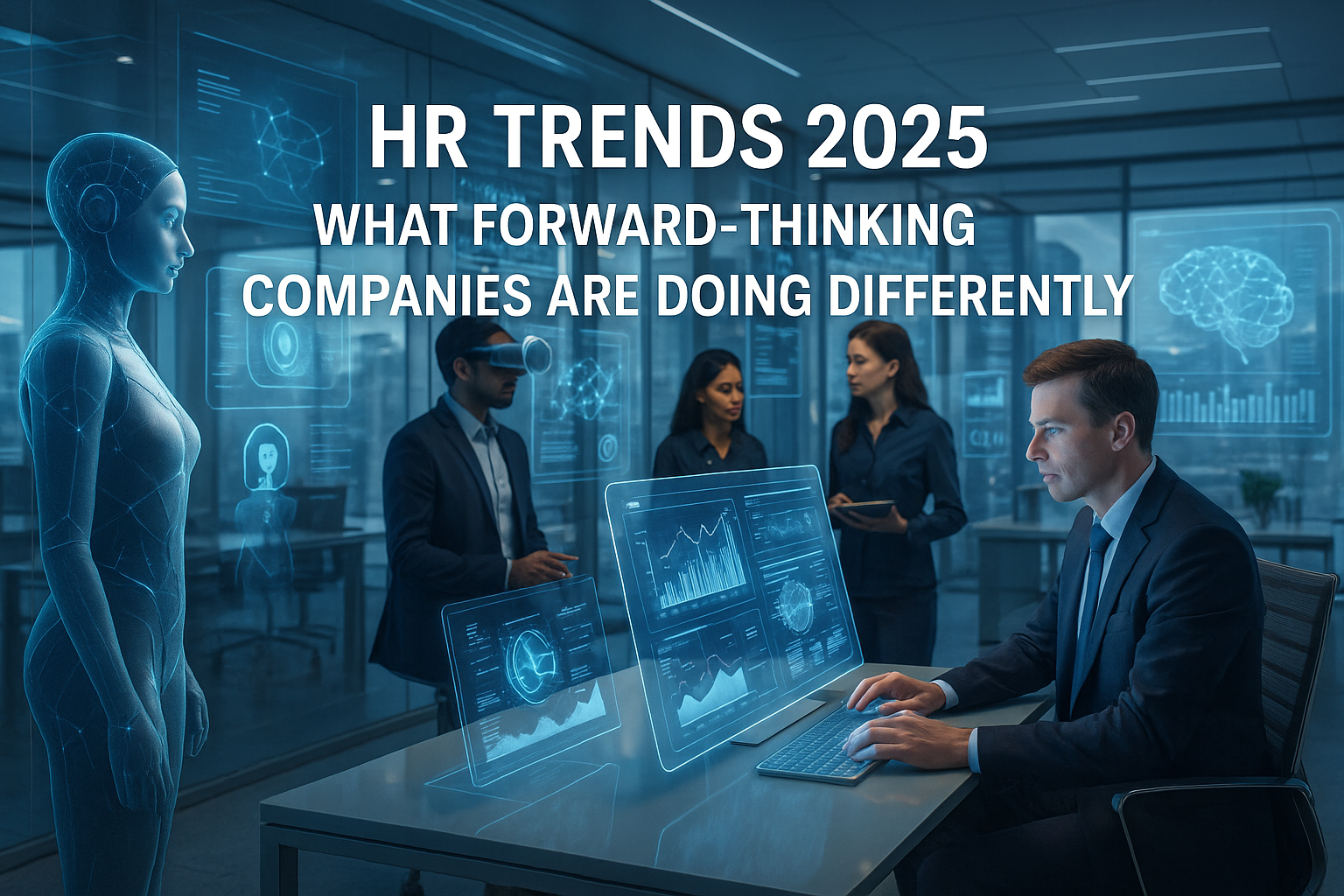Your basket is empty
Already have an account? Log in to check out faster.
Already have an account? Log in to check out faster.

As we navigate through 2025, the human resources landscape is undergoing a transformative shift. Walt Disney famously said: "Times and conditions change so rapidly that we must keep our aim constantly focused on the future." 2025 will certainly prove to be a year of transformative change — with disruptive forces set to reshape the working world.
Forward-thinking companies aren't just adapting to change—they're orchestrating it. Based on comprehensive research from leading organizations including Gartner, McKinsey, and Deloitte, here are the game-changing trends that define HR excellence in 2025.

If AI was the "appetizer" last year, it will be the main course in 2025. Organizations that hold back will lose top talent and competitive muscle because AI capabilities are rapidly improving and evolving. Forward-thinking companies are moving beyond simple task automation to create AI-powered strategic partnerships.
What Leaders Are Doing:
Real-World Example: A Fortune 500 technology company implemented AI-powered feedback systems that analyze employee sentiment in real-time, enabling proactive interventions that improved retention by 23% within six months.
A 2025 study by the National Association of Colleges and Employers found a staggering 96% of companies now use skills-based hiring in some capacity—and more than half use it either "always" or "most of the time." This represents a fundamental shift in how organizations define and acquire talent.
Strategic Advantages:
Innovation in Practice: Leading companies are using AI-powered skills assessments that evaluate candidates through job-specific simulations rather than traditional interviews, resulting in 40% better job performance predictions.
Old-fashioned, backward-focused, and compliance-driven performance management and performance reviews: "The idea that performance management exists solely to evaluate past performance will be turned on its head in 2025," says Betterworks CEO Doug Dennerline.
The New Paradigm:
Measurable Impact: Companies implementing forward-looking performance systems report 35% higher employee engagement and 28% faster goal achievement rates.

Although the labor market has undergone significant shifts, most organizations still rely on headcount-based planning, which limits their ability to anticipate future talent needs. In fact, only 15% of companies engage in strategic workforce planning.
Leading Practices:
According to Gartner's survey, 75% of HR leaders believe managers are overwhelmed, while 70% report their current leadership programs are not preparing managers for the future.
Innovative Solutions:
Success Metrics: Companies investing in next-generation leadership development see 42% faster decision-making and 31% improvement in team performance.
Employees are placing more value on companies that support their overall well-being, both inside the workplace and outside. This includes access to mental health resources, flexible scheduling options, and a workplace culture that allows open conversations about stress and burnout.
Comprehensive Approach:
Leading companies are embedding diversity, equity and inclusion (DEI) into their core strategies. By fostering an inclusive environment, they recognize that diverse teams drive better decision making and innovation.
Advanced Strategies:
Our research shows that employees are more ready for AI than their leaders imagine. In fact, they are already using AI on a regular basis; are three times more likely than leaders realize to believe that AI will replace 30 percent of their work in the next year; and are eager to gain AI skills.
Implementation Excellence:
The World Economic Forum's latest Future of Jobs Report found that, on average, workers can expect that two-fifths (39%) of their existing skill sets will be transformed or become outdated by 2030.
Adaptive Approaches:

Forward-thinking companies are redefining success metrics to reflect the new realities of work:
The future of work trends in 2025 will redefine how organizations operate amid rapid technological advancements and shifting workforce dynamics. By embracing these trends, organizations have the opportunity to enhance productivity, foster innovation and build resilient, inclusive cultures that thrive in a competitive global landscape.
Key Success Factors:
The organizations that will thrive in 2025 and beyond are those that view HR not as a support function, but as a strategic engine for competitive advantage. To help their organizations thrive under these conditions, HR must embrace these disruptions and craft strategies that enhance technological advancements with a human touch.
The future belongs to companies that can seamlessly blend human wisdom with artificial intelligence, create inclusive cultures that unlock every employee's potential, and build organizational agility that turns disruption into opportunity. The question isn't whether these changes are coming—they're already here. The question is whether your organization will lead the transformation or be left behind by it.
The time for incremental change has passed. In 2025, only bold, forward-thinking HR strategies will secure lasting competitive advantage.

Don’t miss this opportunity to upgrade your HR operations and join the growing list of businesses in Sri Lanka achieving success with GalleryHR.
GalleryHR is committed to helping Sri Lankan businesses thrive with smarter, more efficient HR solutions. Partner with us today and experience the difference.
Join our empire today!































0 comments